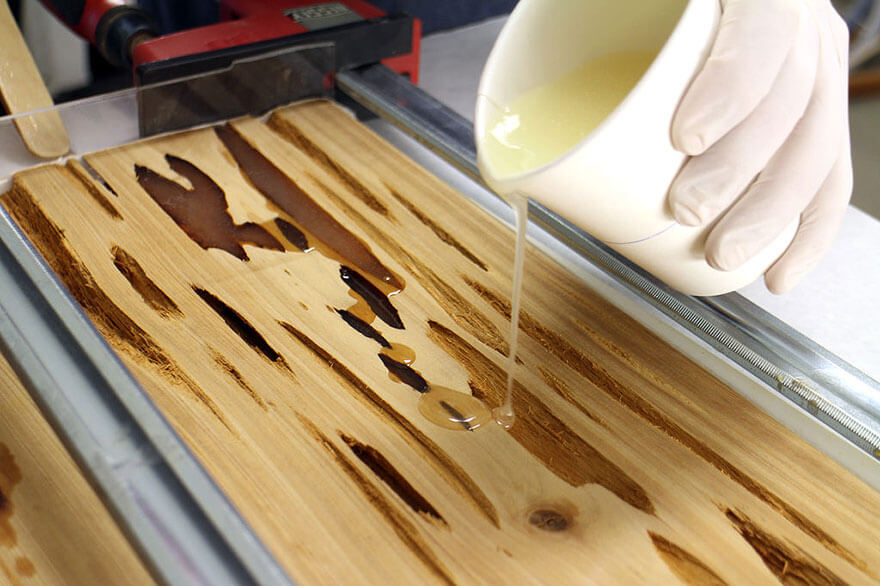

This step-by-step river table tutorial will walk you through making a river table from start to finish.Īlthough a river tables seem like an intimidating epoxy project, the process is fairly simple, it requires a few simple woodworking tools, and there are just a few key steps: We can imagine the effects are amazing not only in household furnishings but also in restaurants, nightclubs and street furniture installations.Follow our how-to guide to making an epoxy resin river table, including preparing the raw slab, building a mold, and coloring your river table with mica powder.Įpoxy resin river tables are one-of-a-kind creations that are equal parts beautiful and functional.

Love the results? If so, you can follow his video showing how you can make your own Glow Table on instructables. He then filled the voids with a clear resin and phosphorescent powder mixture. The table surface is made using sheets of Pecky Cypress, which is known for containing rotting sections that can be easily removed. A blog by Mat Brown showing his step-by-step procedures can be found here.Īnother great example is Glow Table by Mike Warren. But instead of a colour-matching epoxy, he uses resin mixed with a type of glow-in-the-dark powder that he found on e-bay. He notes the process of creating these glowing shelves draws on a more traditional technique whereby the natural cracks that occur in wood are filled with a colour-matched epoxy in order to ‘repair’ the wood and give it a more ‘perfect’ finish. Industrial Designer Mat Brown creates glowing shelves by filling naturally formed voids in Chestnut planks with a photoluminescent resin. Mat Brown and Mike Warren are two different designers who have recently worked with this technique to great effect – and are sharing their secrets for creating this ‘glow wood’. By mixing a phosphorescent powder with resin and the filling in the cracks and knotholes that naturally occur in wood materials, you can create beautiful surfaces that illuminate after being charged by sunlight.


 0 kommentar(er)
0 kommentar(er)
